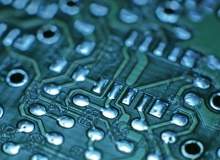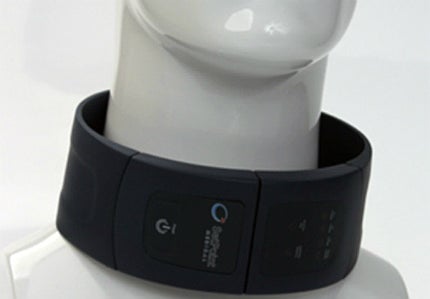

Bioelectronic medicine – in other words nano-scale devices that connect to groups of individual nerve fibres and change patterns of electrical signals, to restore health to organs and biological functions – could be available to patients worldwide in a matter of mere decades, if GlaxoSmithKline’s (GSK) pioneering work in this small but growing field goes according to plan.
While small molecule or biologic drugs affect all body tissues – those that are diseased and those that are not – bioelectronic medicine, which will use the central and peripheral nervous systems to modulate the function of diseased organ systems, has the advantage of harnessing a ‘hard-wired’ anatomic pathway, which has been evolutionarily designed to control the function of an organ system in a precise manner.
To make these medicines a reality GSK certainly isn’t going to be doing all the work itself. Rather, the company, which believes bioelectronic medicine could have a huge impact across many therapeutic areas – from diabetes to heart failure, rheumatoid arthritis to gut motility – is putting initiatives and funds in place to act as a catalyst, bringing together the many different experts and disciplines necessary to make medicines that speak the electrical language of the body a reality in the not too distant future.
"We feel the components are now here, but someone is required to integrate the different disciplines – engineering, biology, informatics, and so on – and give the scientific community the reassurance that there is a long term player willing to work with them to bring these medicines all the way to patients," said Kris Famm, head of the Bioelectronics R&D unit at GSK.
A three-pronged approach
GSK’s Bioelectronics research and development (R&D) unit proposes doing this in three key ways in the coming months. Firstly, it will launch a new funding programme to support up to 20 projects around the world that will swiftly initiate research in areas that can underpin bioelectronic medicines.

US Tariffs are shifting - will you react or anticipate?
Don’t let policy changes catch you off guard. Stay proactive with real-time data and expert analysis.
By GlobalDataSecondly, the company will be convening an international conference for the bioelectronic research community in December 2013, which aims to encourage researchers to meet, build relationships and share early findings, and will also offer a $1m innovation prize.
And finally, GSK has created Action Potential Venture Capital (APVC) Limited, a new $50m strategic venture capital fund that invests in companies that pioneer bioelectronic medicines and technologies.
APVC’s first investment will be in California’s SetPoint Medical, which is developing a highly novel approach to treat inflammatory diseases, such as rheumatoid arthritis and inflammatory bowel disease, using implantable devices that stimulate the body’s vagus nerve.
It is only early days for SetPoint, which has also secured funding from Boston Scientific and Covidien, among other global healthcare leaders, but if all goes to plan, CMO Ralph Zitnik believes an approved device is only a few years away.
"We have completed a small pilot study in patients with rheumatoid arthritis which was presented in abstract form at the American College of Rheumatology meetings in 2012. The patients in the study had failed methotrexate, a small molecule first-line agent used prior to biologic therapy. Six of eight patients studied had clinical responses, and of those six, two had full disease remission," he noted.
"We are currently studying a later stage population that has failed both first and second line biologic drugs and we will follow this study with a definitive randomised controlled trial, to firmly establish the efficacy of this approach. Following that study, we will advance to registration studies. While the timeline is difficult to predict with precision, if our path is successful we might see approval in Europe within two to three years and in the US in four to five years."
For Famm, investing in SetPoint was a no-brainer. Not only has the company opened a whole new group of diseases to the possibilities of bioelectronic medicine; its device also has the hallmarks of what GSK hopes bioelectronic medicine will look like in the future – it’s small, it can be introduced through minimally invasive surgery and it can be programmed by a physician on his iPad.
Potential for a wide spectrum of diseases, but challenges remain
It’s certainly not just inflammatory conditions that will – in the future – be eligible to be treated with bioelectronic medicine. Indeed, one of the key reasons for GSK’s interest in this field is the fact that this new form of intervention bears relevance across many, if not all, of the therapeutic areas the company works in.
"We believe that everything from metabolic conditions such as diabetes and gut motility to cardiovascular conditions, such as hypertension and heart failure, to respiratory conditions like asthma and COPD as well inflammatory and peripheral pain conditions have a neural component," Famm remarked.
"Of course, how strong that neural component is in terms of being able to affect disease progression is the big question we need to ask now. However, we are confident that bioelectronic medicine is not something you will see only in one disease area; it’s a new way of affecting biology, which bears relevance across a range of diseases."
Of course, on top of establishing which disease classes can be best treated through this approach, there are many other challenges and unknowns that GSK and its collaborators will come up against on their journey to make bioelectronic medicine a reality.
Improving the precision of nerve stimulation is key among them. "There are already devices that stimulate these nerves today [such as pace-makers and defibrillators], but they are very macro in their effect – they affect the whole population of nerve fibres," Famm explained. "How to get the precision so you can actually listen to and speak that electrical language of the nerves is a technical holy grail."
Another key challenge is creating interfaces that can be introduced to a specific nerve without damaging it.
"We need to be able to eavesdrop on a nerve without being disruptive to it," Famm remarked.
And, of course, there’s the question of cost. "It’s not good enough to create a technical solution that ticks all the boxes but requires a very bespoke, tailored approach," Famm said. "Success comes if we can create a microscopic entity that can be introduced on various peripheral nerves in a minimally invasive way. That way, we can address the needs of millions of patients around the world at a cost that works for the whole healthcare system."
This is still many decades away, Famm is keen to emphasise – creating precise, bioelectronic medicines available to patients globally is a long-term goal. However, by the end of the decade, devices such as SetPoint’s will more than likely be approved.
"Of that I’m quite confident," Famm concluded. "And I hope we’re significantly on the way to higher resolution, closed loop interventions too."
For Zitnick too, progress in this field is only set to get faster: "This trend will likely continue and accelerate given the significant interest of both traditional medical device companies, as well as newer entrants in pharma and biotech like GSK. In our experience the approach is very compelling to patients and we feel their interest in this kind of alternative treatment for their disease will in fact make this transformative."
Related content
DNA patent law – what does it mean for pharma?
Earlier this year the US Supreme Court made the landmark decision that DNA could not be patented, declaring "a naturally occurring DNA segment is a product of nature and not patent eligible merely because it has been isolated."
Game on: could joystick-controlled nano-robots save lives?
Students at the University of Alberta have pioneered a nano-scale robot that could eventually be programmed to travel through the body, administering drugs or destroying cancerous tissue.



